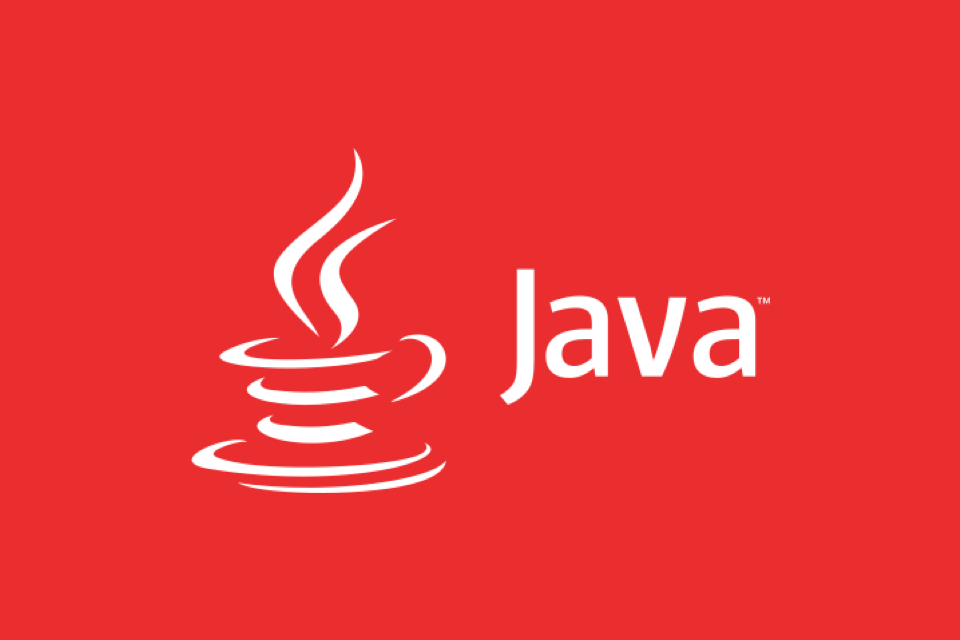Optimizing Java Microservices for Cloud Native
Jul 17, 2025 am 03:19 AMOptimizing Java microservices in a cloud-native environment lies in lightweight, elasticity and automation. 1. Choose a lighter framework such as Micronaut or Quarkus to support AOT compilation to improve startup speed and reduce memory consumption; 2. Properly configure JVM parameters, set heap memory limit, enable container support, and adjust garbage collectors to avoid memory overload; 3. Optimize the construction and deployment process, adopt multi-stage construction, external configuration management, and combine health check interfaces to improve image security and deployment efficiency.

The core of Java microservices optimization in a cloud-native environment is lightweight, elasticity and automation. Traditional Java applications are more focused, slow to start and high resource usage, while cloud native emphasizes rapid deployment, elastic scaling and high availability, which requires adjustments from architecture design to runtime.

Using lightweight frameworks
Spring Boot is the most popular Java microservice framework at present, but the default configuration is not suitable for all cloud-native scenarios. To improve performance and reduce resource consumption, consider:
- Choose a lighter frame, such as Micronaut or Quarkus
- These frameworks support AOT (previous compilation), which can significantly shorten startup time
- Reduce runtime reflection usage and reduce memory overhead
Take Quarkus as an example, it supports GraalVM native image building, which can enable Java applications to be close to the startup speed and low memory footprint of native programs, which is very friendly to Serverless or frequent scaling scenarios.

Configure JVM parameters reasonably
The default JVM parameters are more suitable for long-running server applications, but may not be suitable in container or cloud environments. For example:
- Set a reasonable heap memory limit to avoid exceeding container limits and causing OOMKilled
- Use -XX: UseContainerSupport Ensure that the JVM correctly recognizes container resources
- Adjust garbage collectors, such as G1GC or ZGC, to adapt to low latency requirements
A common problem is that the JVM does not automatically recognize the container memory limit, and if -Xmx is not set manually, it may cause memory limit to be killed. Therefore, it is recommended to clearly specify the maximum heap size during deployment and retain a certain amount of memory for use in non-heap areas and systems.

Optimize the construction and deployment process
Cloud Native emphasizes CI/CD and automated operation and maintenance, so the construction and deployment methods of microservices also need to be optimized:
- Reduce final image volume using multi-stage construction
- Config externally managed via ConfigMap or Spring Cloud Config
- Use health check interfaces (such as /actuator/health) to cooperate with Kubernetes probes
For example, in Dockerfile, you can first use a build image to package the application, and then copy it to a minimum basic image to run. In this way, the final image does not contain compilation tools, is smaller in size and has higher security.
Basically that's it. Optimizing Java microservices is not something that can be achieved overnight, but as long as you grasp these key points, the service can better adapt to the cloud environment.
The above is the detailed content of Optimizing Java Microservices for Cloud Native. For more information, please follow other related articles on the PHP Chinese website!

Hot AI Tools

Undress AI Tool
Undress images for free

Undresser.AI Undress
AI-powered app for creating realistic nude photos

AI Clothes Remover
Online AI tool for removing clothes from photos.

Clothoff.io
AI clothes remover

Video Face Swap
Swap faces in any video effortlessly with our completely free AI face swap tool!

Hot Article

Hot Tools

Notepad++7.3.1
Easy-to-use and free code editor

SublimeText3 Chinese version
Chinese version, very easy to use

Zend Studio 13.0.1
Powerful PHP integrated development environment

Dreamweaver CS6
Visual web development tools

SublimeText3 Mac version
God-level code editing software (SublimeText3)
 Build cloud-native applications from scratch using Docker and Spring Boot
Oct 20, 2023 pm 02:16 PM
Build cloud-native applications from scratch using Docker and Spring Boot
Oct 20, 2023 pm 02:16 PM
Build cloud-native applications from scratch using Docker and SpringBoot Summary: Cloud-native applications have become a trend in modern software development. By using container technology and microservice architecture, rapid deployment and scaling can be achieved, and the reliability and maintainability of applications can be improved. . This article will introduce how to use Docker and SpringBoot to build cloud native applications and provide specific code examples. 1. Background introduction Cloud native application (CloudNativeApplication) refers to
 Troubleshooting is too annoying, try the super power of GPT
Mar 14, 2024 pm 07:52 PM
Troubleshooting is too annoying, try the super power of GPT
Mar 14, 2024 pm 07:52 PM
When using Kubernetes, you will inevitably encounter problems in the cluster, which need to be debugged and repaired to ensure that Pods and services can run normally. Whether you are a beginner or an expert in dealing with complex environments, debugging processes within a cluster is not always easy and can become time-consuming and tedious. In Kubernetes, the key to diagnosing problems is understanding the relationship between the various components and how they interact with each other. Logging and monitoring tools are key to problem solving and can help you quickly locate and resolve faults. In addition, an in-depth understanding of Kubernetes resource configuration and scheduling mechanisms is also an important part of solving problems. When faced with a problem, first make sure your cluster and application are configured correctly. Then, by looking at the logs,
 Is cloud native stability undervalued? Look at the stability guarantee rules of leading financial companies!
Jul 04, 2023 am 08:34 AM
Is cloud native stability undervalued? Look at the stability guarantee rules of leading financial companies!
Jul 04, 2023 am 08:34 AM
Technological waves such as cloud computing, big data, artificial intelligence, and blockchain have given continuous vitality to financial technology innovation. However, at the same time, new economic forms represented by the digital economy have also brought changes to traditional financial formats and existing underlying technologies. Profound changes and huge challenges. In the context of a complex international situation, the country has put forward higher requirements for safe, reliable, independent and controllable technologies. The financial industry information system has independent research and development capabilities, and reducing dependence on commercial products has become an urgent task. Since the financial industry involves people's livelihood, once problems occur in the business, it will have a serious impact on the entire public opinion. Therefore, ensuring the system stability of the financial industry is particularly important. However, financial companies that are going digital have unpredictable, uncontrollable, and highly complex businesses.
 Decoding synchronous and asynchronous communication in cloud native applications
Apr 09, 2024 pm 02:14 PM
Decoding synchronous and asynchronous communication in cloud native applications
Apr 09, 2024 pm 02:14 PM
Designing cloud-native applications involves managing a complex system of microservices and serverless components that need to communicate with each other efficiently. Synchronous communication uses HTTP or gRPC calls, waiting for a response within a specified time range, providing real-time feedback, and is suitable for scenarios that require immediate response. Asynchronous communication utilizes message brokers (such as RabbitMQ or Kafka) to exchange messages without requiring immediate responses, enhancing the scalability of the system. By understanding the advantages and disadvantages of each communication mode, architects can design systems that effectively coordinate these independent elements to deliver high-performance, scalable, and reliable cloud-native applications.
 How to build cloud-native web applications using C++?
Jun 01, 2024 pm 06:22 PM
How to build cloud-native web applications using C++?
Jun 01, 2024 pm 06:22 PM
Building a cloud-native web application using C++ involves the following steps: Create a new project and add the necessary libraries. Write business logic and create HTTP routes. Use Dockerfile to create container images. Build and push the image to the registry. Deploy applications on Kubernetes.
 The role and practice of Golang in cloud native architecture
Jun 02, 2024 pm 08:42 PM
The role and practice of Golang in cloud native architecture
Jun 02, 2024 pm 08:42 PM
Among cloud-native architectures, Go is favored for its concurrency, cross-platform features, and ease of use. It enables easy building of highly concurrent applications, deployment on multiple platforms, and has rich network support. A cloud-native microservice built in Go can create routes, define endpoints, handle requests and return responses. Therefore, Go is well suited for cloud-native development and can optimize the performance and scalability of microservices and applications.
 IBM develops cloud-native AI supercomputer Vela to flexibly deploy and train tens of billions of parameter models
Apr 14, 2023 pm 01:46 PM
IBM develops cloud-native AI supercomputer Vela to flexibly deploy and train tens of billions of parameter models
Apr 14, 2023 pm 01:46 PM
ChatGPT is popular on the Internet, and the AI ??model training behind it has also attracted widespread attention. IBM Research recently announced that the cloud-native supercomputer Vela it developed can be quickly deployed and used to train basic AI models. Since May 2022, dozens of the company’s researchers have been using this supercomputer to train AI models with tens of billions of parameters. Base models are AI models trained on large amounts of unlabeled data, and their versatility means they can be used for a range of different tasks with just fine-tuning. Their scale is enormous and requires massive and costly computing power. Therefore, as experts say, computing power will become the biggest bottleneck in developing the next generation of large-scale basic models, and training them requires a lot of computing power and time. Training available
 Compare the architectural similarities and differences between SpringBoot and SpringCloud
Jan 24, 2024 am 09:39 AM
Compare the architectural similarities and differences between SpringBoot and SpringCloud
Jan 24, 2024 am 09:39 AM
Comparing the similarities and differences between Spring Cloud and Spring Boot from the architectural level. Spring Cloud and Spring Boot are currently the most popular microservice development frameworks in the Java field. They are both derived from Spring Framework. Although they are both used to build enterprise-level applications, there are some differences at the architectural level. This article will compare SpringCloud and SpringBoot from the architectural level, and through specific






